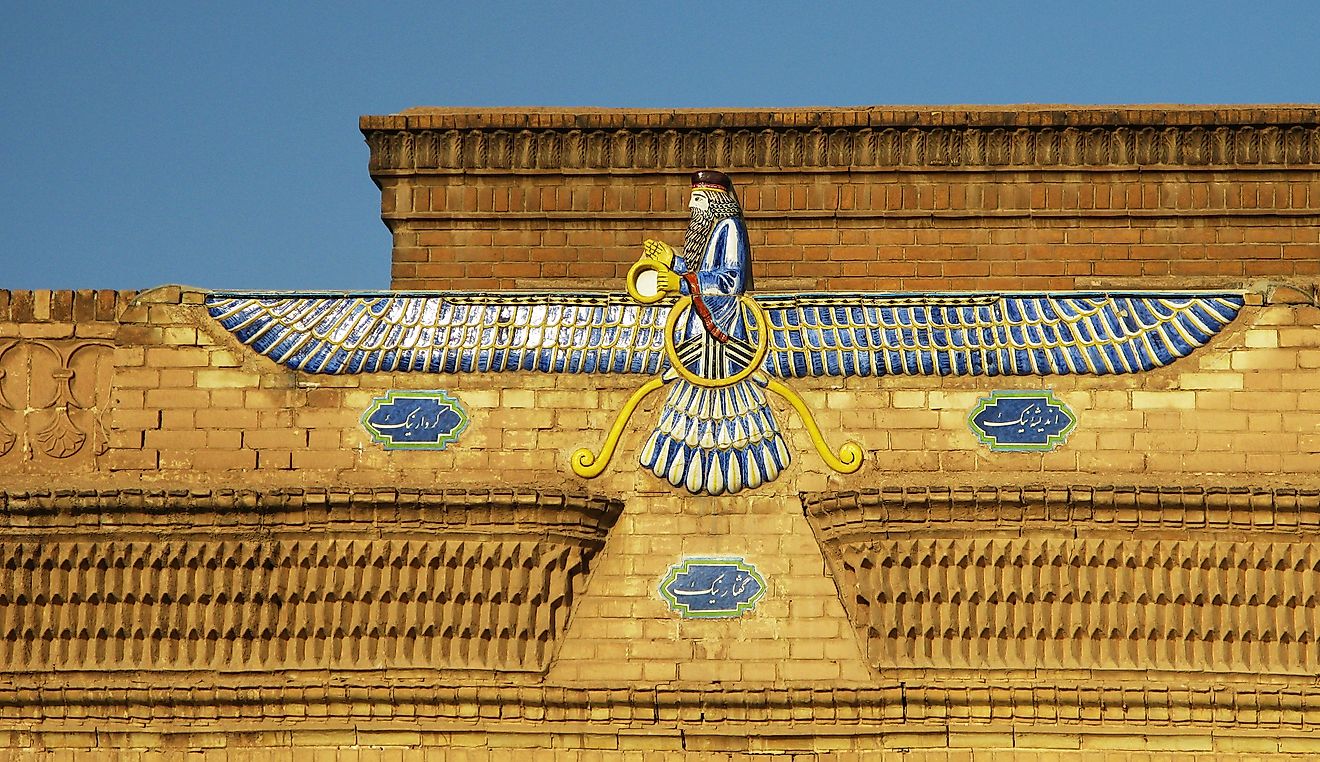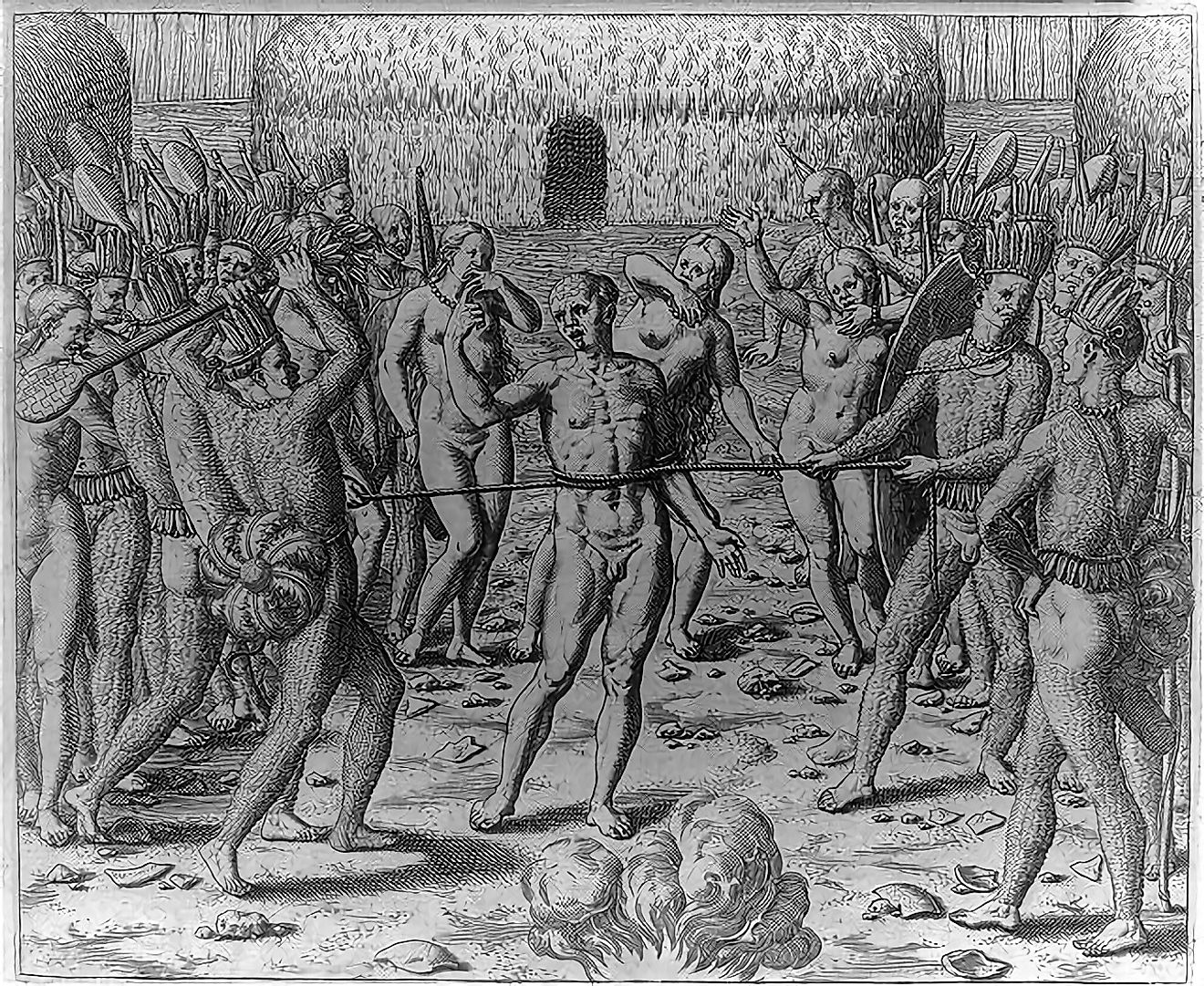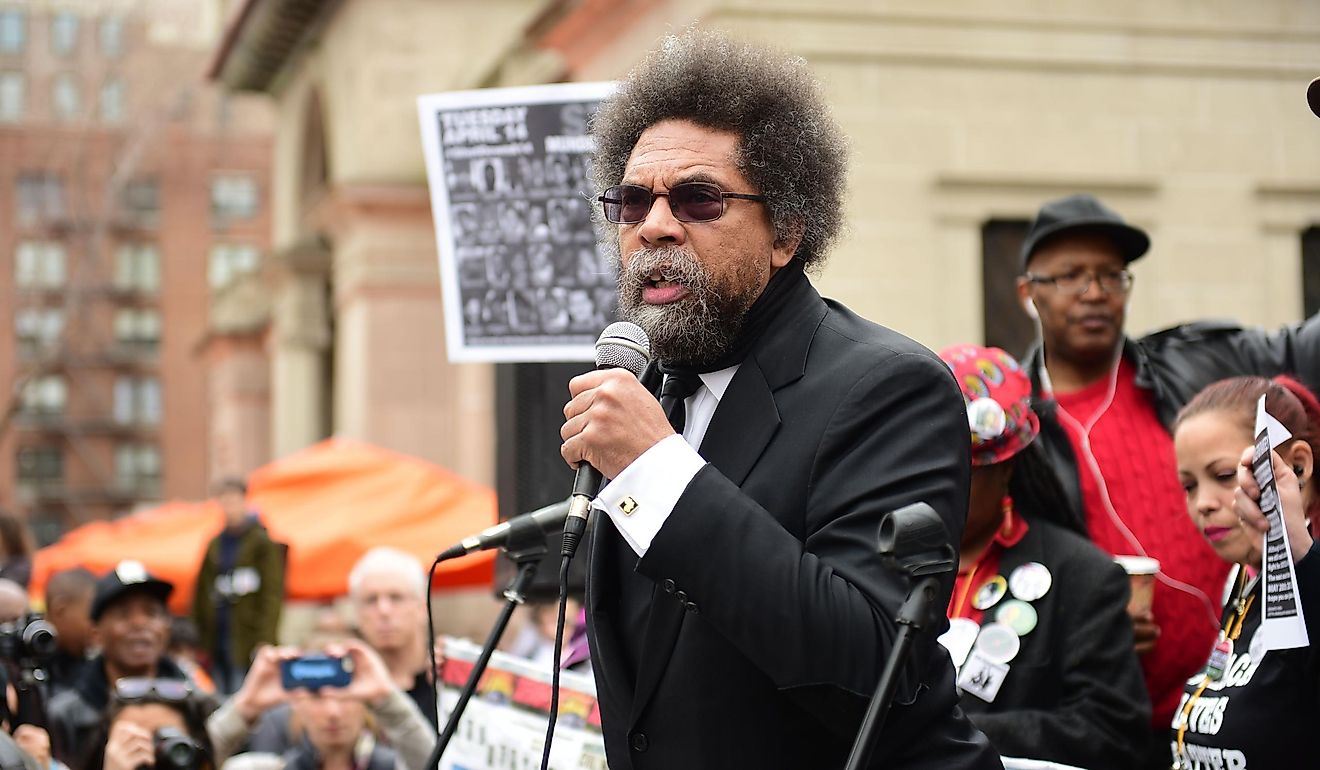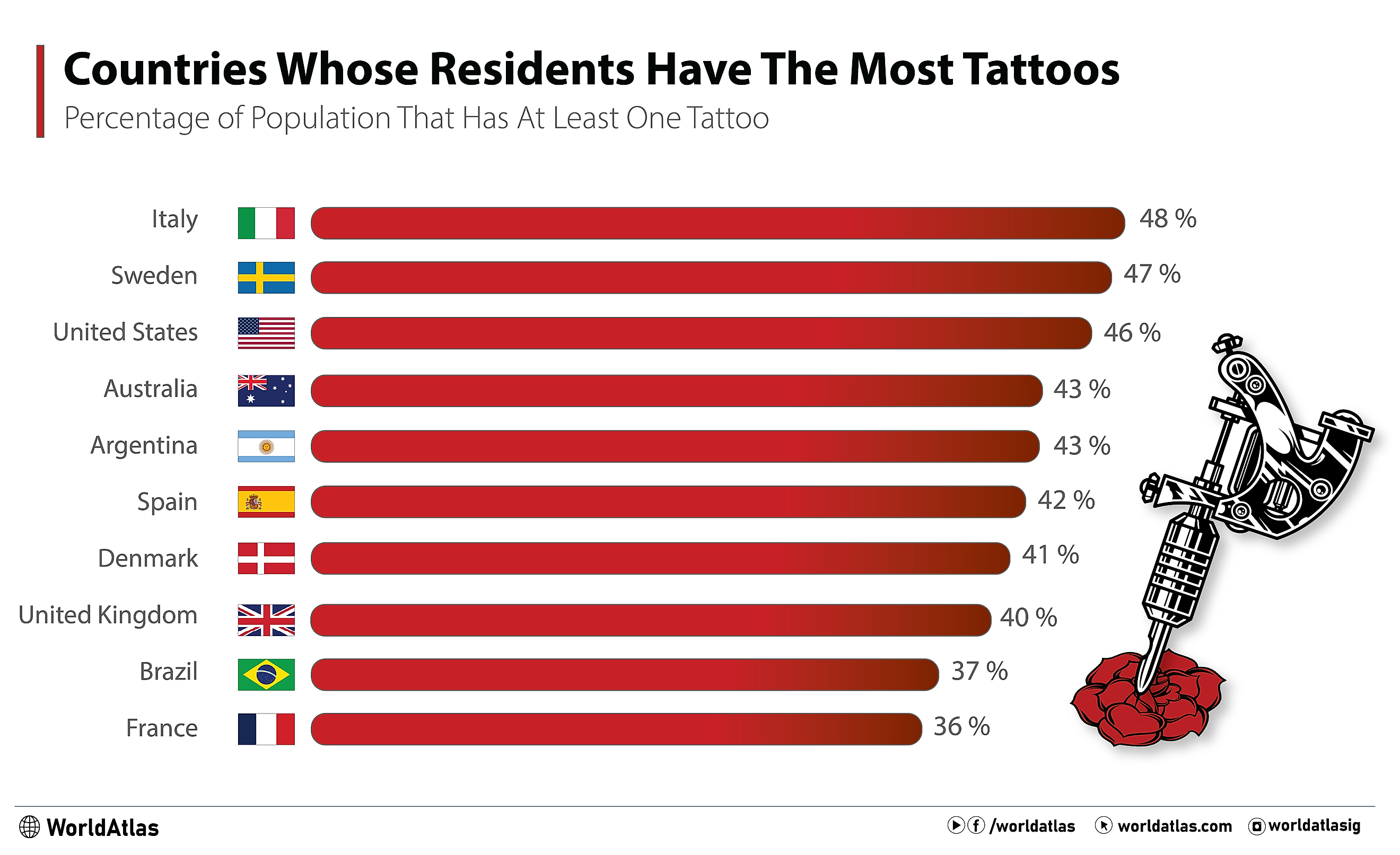
Which Country's Residents Have the Most Tattoos?
For centuries, tattoos have been a profound form of personal expression and art, recurring throughout various time periods, civilizations, and cultures around the globe. In fact, there is archeological evidence of tattooing on mummified skin dating back to the 4th millennium BCE. In modern ages, tattoo rates have been on the rise, increasing in popularity since the 1970s. Certain countries, however, are much more open to tattooing than others. Although tattoo rates can vary across different studies, the Dalia Research study reports that Italy has the highest rate of residents with tattoos, with 48% of the population having at least one.
Countries Whose Residents Have The Most Tattoos
| Rank | Country | Percentage Of Population That Has At Least One Tattoo |
|---|---|---|
| 1 | Italy | 48% |
| 2 | Sweden | 47% |
| 3 | United States | 46% |
| 4 | Australia | 43% |
| 5 | Argentina | 43% |
| 6 | Spain | 42% |
| 7 | Denmark | 41% |
| 8 | United Kingdom | 40% |
| 9 | Brazil | 37% |
| 10 | France | 36% |
Italy’s Love for Tattoos
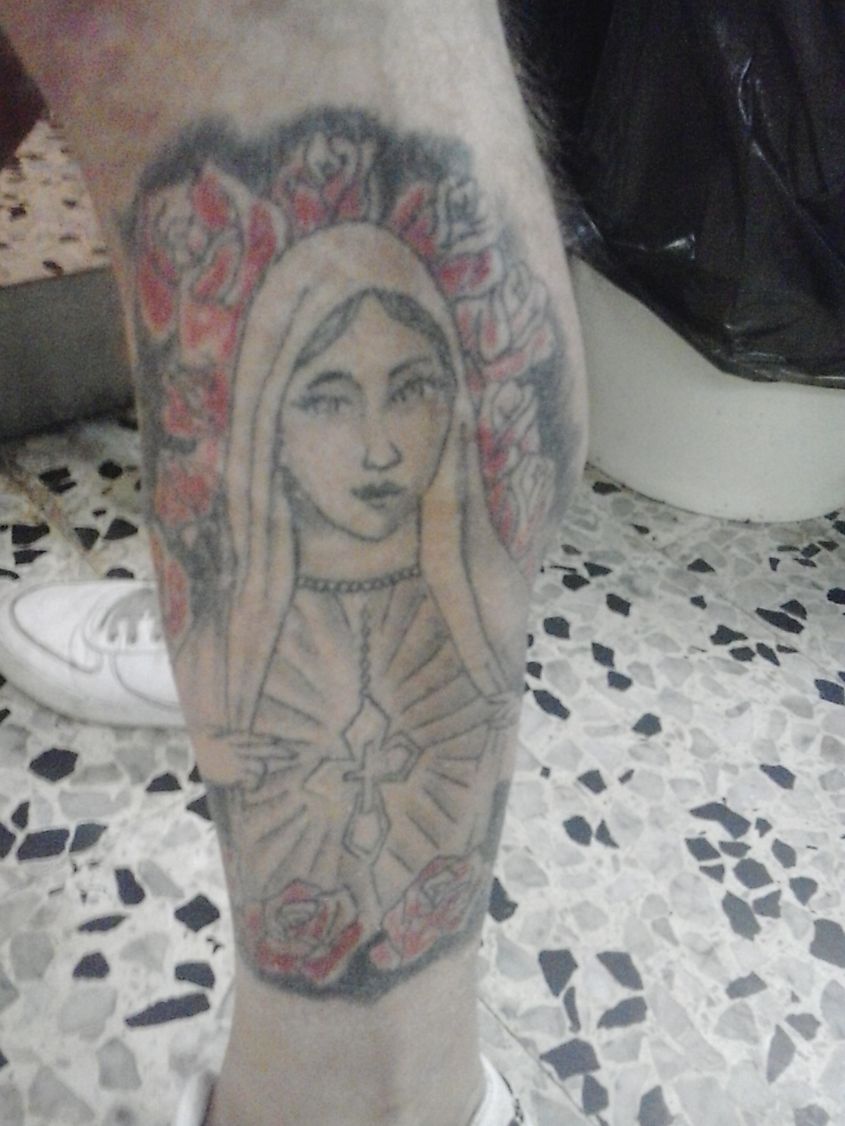
With nearly half of its residents sporting at least one tattoo, Italy is the most tattooed country in the world. The country’s capital, Rome, has more tattooists than any other province, followed by Milan and Turin. Within the country, more women have tattoos than men, a trend that contrasts with the pattern seen in many other countries. Many Italians, driven by pride in their heritage, opt for tattoos featuring the shape of Italy or the Italian horn. Additionally, with nearly 85% of the population practicing a religion, faith-based tattoos are also common. Tattoos are much more popular in southern Italy, with only about one-fourth of all tattooed Italians residing in the north.
Italy's Health Concerns With Tattoos

Although tattoos are a common occurrence in Italy, some health organizations have shown concerns. The president of the Italian National Institute of Health, Walter Riccardi, considers tattoos to be a “growing phenomenon” that the country should monitor as it can sometimes have health implications. Countrywide, 3.3% of tattoos relate in health complications, for example, such as infections or allergic reactions.

The National Institute of Health also wants young people in Italy to be aware of the potential health issues and long-term implications that result from tattoos. Currently, 7.2% of all tattoos are given to minors (under 18). Many Italians regret their tattoos as well. Of the 48% of Italians who have tattoos, 20% regret getting at least one. Of these people with regrets, 4% underwent tattoo removal procedures to erase the ink.
Sweden's Tattoo Evolution
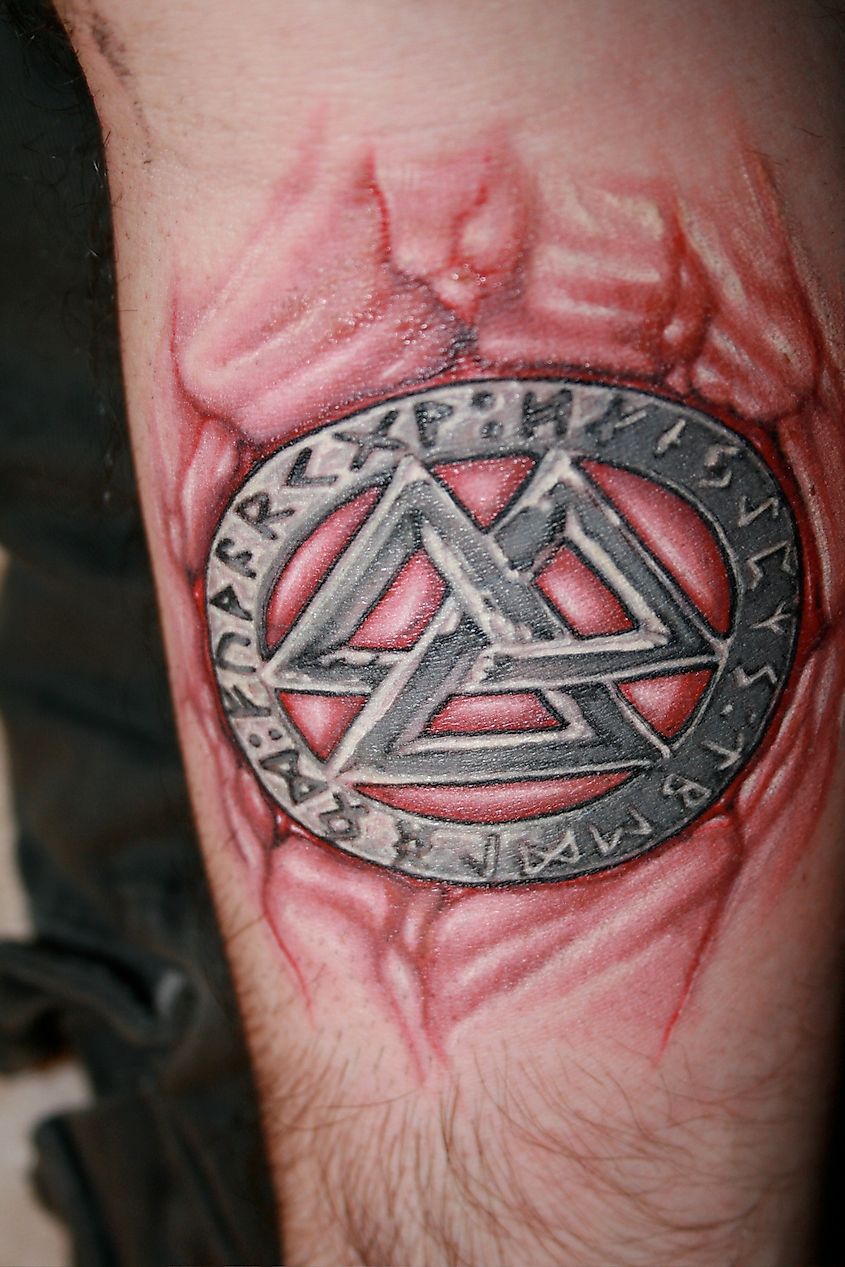
With 47% of Swedes tattooed, Sweden is the world’s second most tattoo-popular country. The popularity of tattoos in Sweden is hardly a recent trend; the Swedish culture has been embracing tattoos for millennia. In fact, historical evidence suggests that as early as 900 BCE, Viking Swedes adorned themselves with tattoos, covering areas from their necks down to their fingertips. Common designs of the period included knotwork and images of trees.
In addition to Sweden’s long history with tattoos, the country’s modern culture continues to embrace and promote tattooing. Sweden’s capital, Stockholm, is a creative city where its residents support art and self-expression, with people viewing tattoos as a way to express individuality and a celebration of life. As a result, there is a wide and diverse variety of tattoo parlors operating in the city today.
Stockholm’s Annual Tattoo Convention
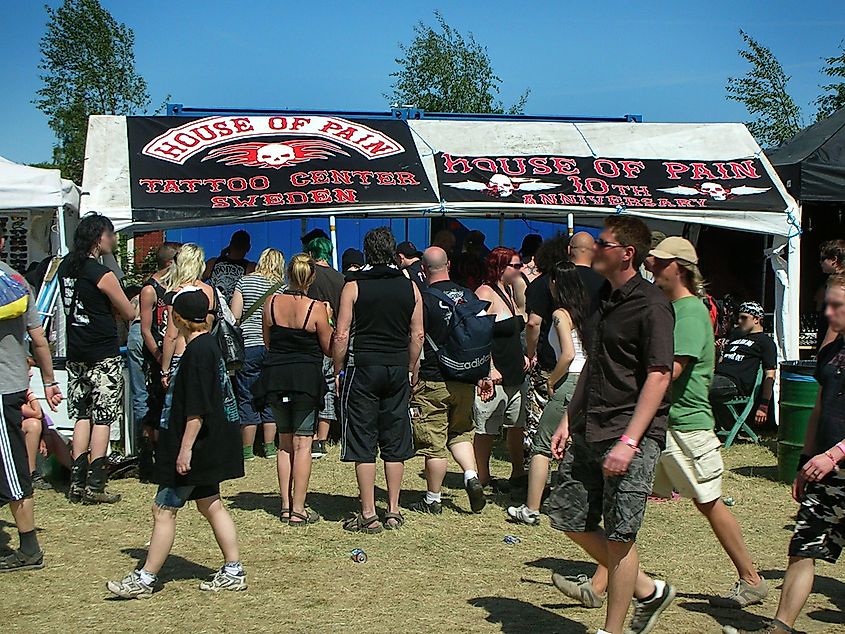
In addition to Stockholm’s strong culture of self-expression, the city also prides itself on its elaborate tattoo industry. Its innovation in body art and tattooing is perfectly expressed through the city’s annual convention. Every August, Stockholm hosts a three-day tattoo convention that has been running since its establishment in 1996. It attracts over 200 talented artists and designers from all over the world, and features 15 different tattoo competition categories, such as “Best of Neo Traditional” and “Best of New School”. Visitors can also compete in the competitions, showcasing their own tattoos, whether they be new or longstanding.
Reasons and Demographics Behind Tattoos in the United States

The United States ranks just one percentage point below Sweden, with approximately 46% of its population tattooed. Americans tend to be particularly nostalgic when it comes to their tattoos. A Pew Research Center survey found that 69% of tattooed Americans cite the commemoration of someone or something as a major reason for getting at least one of their tattoos. Nearly half (47%) have a tattoo that makes a statement about their beliefs, while about a third (32%) have one or more that serves cosmetic purposes to improve appearance.

There are many demographic factors that affect one’s likelihood of having tattoos in the United States. Women are more likely than men to get tattoos in the United States, particularly women in the 18 to 29 age group. Religious individuals are also more cautious about getting tattoos, with fewer than one in three people affiliated with a religion having one. Regarding social class, a higher percentage of lower-income individuals have tattoos than those from middle-income or upper-income backgrounds.
American Tattoo Regrets and Future Intentions
The majority of tattooed Americans have no regrets about their tattoos, with just under a quarter expressing some level of regret, according to the Pew Research study. Conversely, most people without tattoos prefer to stay that way. In fact, 85% of tattoo-free Americans say they are either not at all likely or not very likely to get a tattoo in the future, while only 6% express a strong likelihood of getting one. Additionally, the likelihood of getting a tattoo decreases with age: only 1% of Americans over 65 who currently do not have a tattoo report a high probability of getting one in the future.
Final Thoughts
Although Italy, Sweden, and the United States are the current leaders in tattoo rates, other countries are not far behind. 43% of the Australian and Argentine populations are tattooed, followed by 42% of Spain and 41% of Denmark. However, despite the high tattoo rates in these countries, tattoos still carry significant stigma in others, such as Japan and Iran, where they are often viewed more negatively by their residents. Despite these contrasts, it is clear that tattoos have become a significant and widely accepted form of personal expression in many parts of the world.


